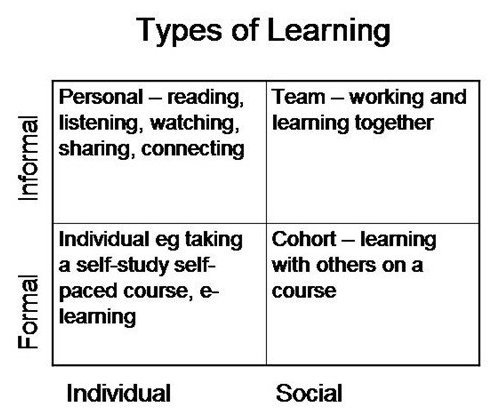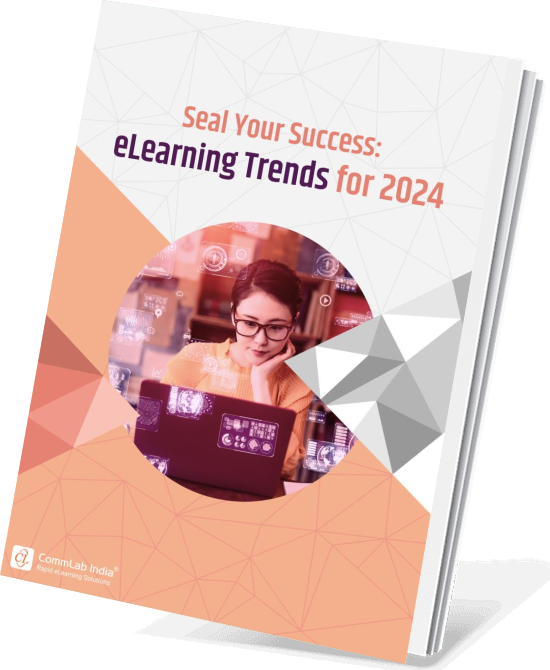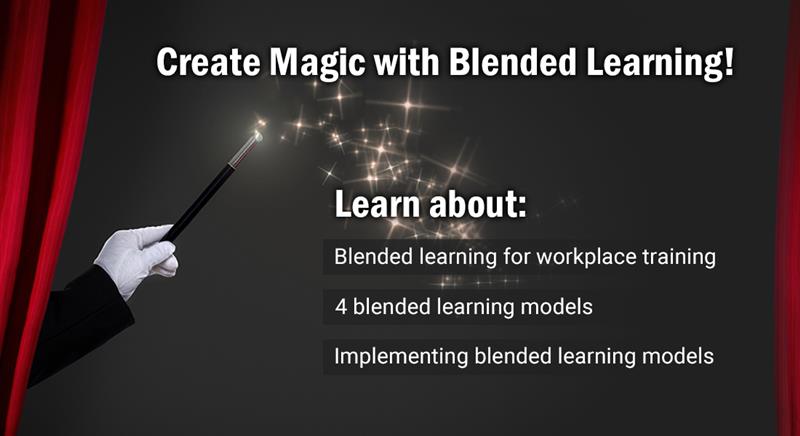5 Common Social Learning Myths in Corporate Training Busted

Whether we realize or not, humans are wired for social learning. This begins from babies trying to learn how to speak by imitating adults, to us trying to learn how to put a wallpaper on our social media handle for the very first time. Social learning has been the primary way we acquired knowledge from each other, sought opportunities, and passed it on.
→ Download eBook- Making a Business Case for eLearning [eBook]
5 Common Social Learning Myths Holding You Back
Myth 1: It is new and a fad
Myth 2: It is synonymous with informal learning
Myth 3: It MUST use social media platforms
Myth 4: It is less structured and hence ineffective
Myth 5: It CANNOT be measured
However, when it comes to corporate training, social learning still takes a backseat as opposed to its effectiveness in the outside realm on an everyday basis. Much like how the ancient world had its myths and the medieval era boasted of folklores and legends, the growing Internet-based world also has their own share of “old midwives’ tales” and misinformation.
Considering the benefits associated with social learning, it’s only fair for your organization to bust its myths and usher its potential in your online training framework.
5 Social Learning Myths Busted
Myth 1: Social Learning is New and a Fad
Contrary to popular belief, social learning is certainly not new. Like I mentioned, it’s been in existence since the time humans started learning. In fact, learned behavior has been an integral part of evolution.
The root of the term “social learning” as we know it today originated from the social learning theory, a behavioral theory that emerged in the late 1970s. Albert Bandura, a Canadian-American psychologist, who has contributed immensely to the cognitive theory said: “Learning is not purely behavioral; rather, it is a cognitive process that takes place in a social context.”
Its advantages which include learning by examples and reinforcement of information come with various “human connections,” and are as valid today.
However, the advent of social networking technologies has given mileage to a new breed of social learning. At present, instructors continue to act as guides, models, and mentors, but at the same time exhibit their authority to groups or communities. This includes learners in a classroom, learners in remote locations, and a range of digital learning resources that are closely connected using social media platforms, online discussion forums, social collaboration tools, etc.
Also, methodologies such as the 70:20:10 model have encouraged organizations to start acknowledging the potential of social learning in the online learning framework. Thereby, today’s generation of active learners who have grown up in a digitally-connected world have shaped new paradigms and will go further. You still think social learning is new and a fad?
Myth 2: It is Synonymous with Informal Learning
Quite often, social learning is perceived to be synonymous with informal learning or the “20” of the 70:20:10 model. While it hinges on an active participatory approach where learners observe and exchange new information and challenges with others, informal learning is impromptu, unscheduled, and unofficial.
So, if you think social and informal learning are the same, they form different aspects of learning. Social elements can be incorporated in formal as well as informal learning in online training. Here’s an image which demonstrates the differences for a clear understanding.

Image Source: http://strategic-hcm.blogspot.com/
As evident from the image, social learning doesn’t necessarily have to be informal, and informal learning isn’t social always.
Additionally, the misconception arises from the fact that social learning is often seen as clear and distinct from the formal training approaches such as seminars, hands-on training sessions, or even eLearning courses for that matter.
However, for instance, a well-structured design for an eLearning program can have scope for discussions where participants share and draw information. This can be in the form of user-generated videos and online discussion forums hosted on the LMS to name a few.

eLearning Trends for 2024
Seal the Deal with Success
- Training Formats for Upskilling and Reskilling
- Popular AI Tools for L&D
- Mastering the New-Age Learning Formats
- And More!
Myth 3: It Must Use Social Media Platforms
The “social” part does NOT necessarily have to be met by only incorporating social platforms in your eLearning programs. Although in a social learning program, you can definitely add Twitter, Facebook groups, LinkedIn groups, or other social media platforms within its context. However, social learning is not limited to social media platforms.
Social learning or social media does not refer to any specific implementation method or a brand name; rather, explains the way of accomplishing things. The social elements in your eLearning program can be very well fulfilled by discussion boards, blogs, online forums, live webinars, user-generated content such as micro videos, and many more. The only condition being your learners should be able to interact with their peers, observe and model behaviors. Also, this can be undertaken either formally or informally, virtually anywhere over online networks.
However, utilizing the existing and highly popular social media platforms in eLearning courses is a good idea to ease learners in. Social media surely is one of the most effective tools at your disposal. It all comes down to when and how well you harness their capabilities. And since your learners use these existing platforms on a daily basis, why not leverage their benefits by creating eLearning discussion groups and forums where they can interact and share?
Myth 4: Social Learning is Less Structured and Hence Ineffective
When it comes to social learning, the fun and entertainment aspect cannot be denied. However, the underlying factor of incorporating social elements in eLearning courses is to impart knowledge and build a memorable learner experience. Much like how there is a purpose and learning objectives in an eLearning course which learners strive for, social learning adds to it. If your eLearning goals aren’t concrete enough, then your social activities will be a reflection of that.
Therefore, your social learning initiative will only be as effective as the eLearning strategy behind it. Having said so, you must ensure the right online tools are used and your learners know how to utilize them and what they will gain from the online learning experience. Social learning holds the power to build skills, enhance knowledge and comprehension, only when it’s structured properly.
To put it simply, online discussion forums, chat boards, and social media are just one part of the larger eLearning landscape. Your online learners need other complementary eLearning activities such as simulations, games, scenarios, etc., to further expand their learning.
Thus, social learning will only be effective when it is rests on a well-structured, organized eLearning structure. And had it been ineffective, do you think social learning approaches have a 75:1 ROI ratio over online training courses? (Association for Talent Development Report)
Myth 5: It CANNOT be Measured
One of the most echoed myths about social learning is that it can’t be measured. Well, to break the ice, it can absolutely be measured. All it requires is a deviation from the usual measurements used for formal learning approaches. Coming to measuring social learning approaches, you need to evaluate two aspects to know if it fared well:
1. Transfer of Knowledge
Your Learning Management System (LMS)) can be integrated with various collaboration tools, host various discussion forums, and gather reports on social media activities as well. The embedded analytics from these tools and platforms will help you gather answers for:
- Who participates and how much?
- Who shares resources and information?
- How many participants have joined?
- What percentage of learners is active?
- What are the learning activities learners participate most in?
These measures will help you understand the enthusiasm, adoption, and satisfaction levels. However, you need to measure other aspects also – measuring if learning is taking place and if it’s improving performance. The assessments and surveys delivered through collaborative tools can capture this information we need. Also, ensure surveys are short and user-friendly for gauging what is happening.
2. Impact
Well, measuring impact is certainly harder than gathering data on learning events. Surveys and assessments can help you gauge individual and team performance, but the C-suite is more interested in organizational performance. What do you do?
If you want to measure the impact of social learning approaches on your organization, then it’s necessary to align training programs with long-term organizational goals. To set the stage, you need to work on:
- Identifying the Key Performance Indicators (KPIs)
- Determining the metric will you use
- Controlling other factors which might influence the learning outcomes
- Deciding how to use data to correlate social learning behaviors with organizational performance measurements
Hence, the stage should be set for utilizing various social learning tools to foster these planned cultural changes in the learning sphere.
So, here are the 5 myths busted. And, I hope by reading this post, you now have a clear idea about the importance of social learning and a deeper understanding of its role in the online training landscape. Have something to share? Do feed in your comments in the section below and tell us what you feel about this blog post.





